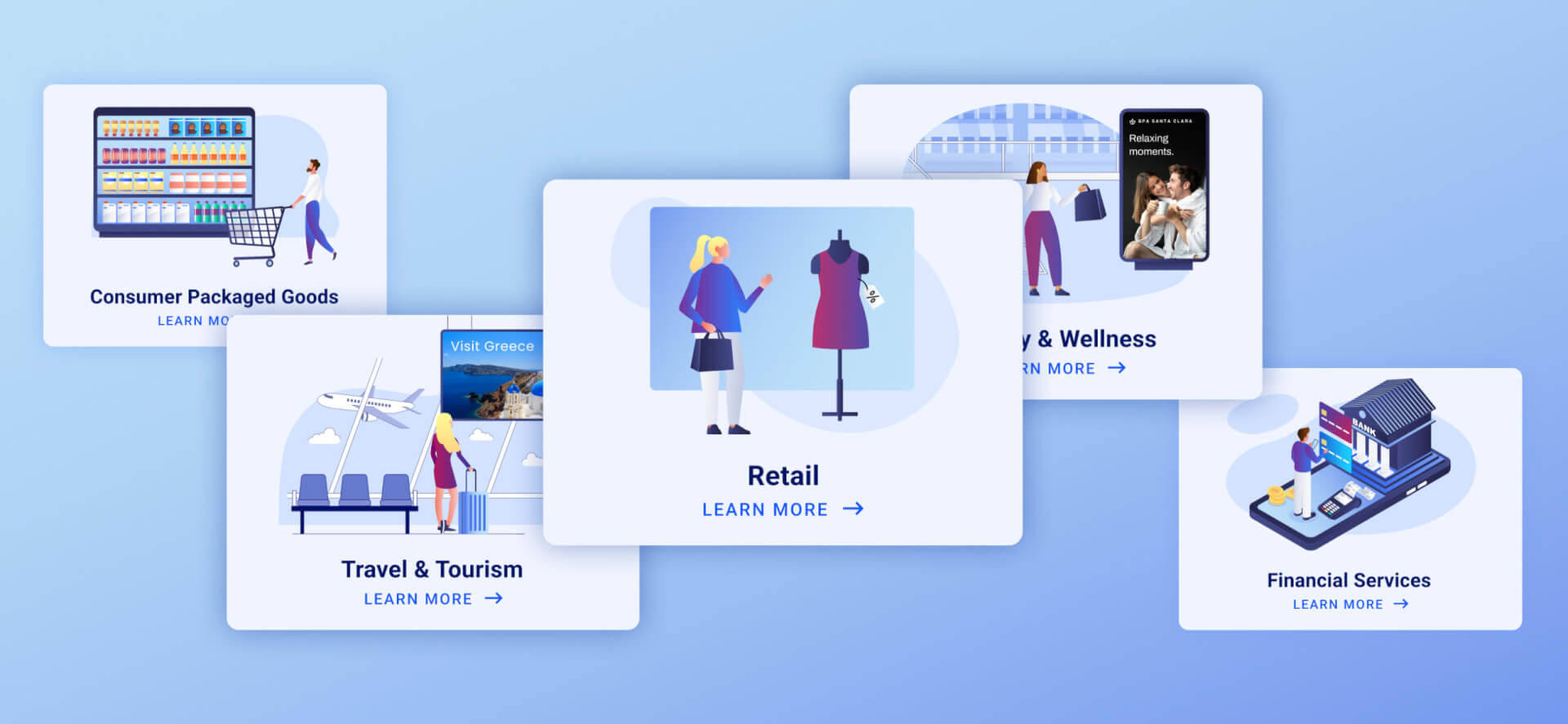| October 11, 2021
Using pDOOH for a faster and more targeted way of adding OOH to your omnichannel campaigns
Advancements in programmatic technologies, like real-time data, contextual triggers, and more sophisticated measurement capabilities, have driven the adoption of programmatic digital out-of-home (pDOOH) and its inclusion in advertisers’ omnichannel strategies. However, integrating it into your omnichannel campaign remains a challenging process for many advertisers.
You often have to work with multiple demand-side platforms (DSPs) for the different ad mediums or even call a media owner to secure DOOH inventory. To address this pain point, many omnichannel DSPs offer auction packages to streamline OOH operations and campaign activations.
Auction packages are customizable packages that include targeted audiences, inventory, and contextual locations with data delivered through a single deal ID. With granular details provided in each package, you can limit the back-and-forth with clients, streamlining the proposal review and approval process. Furthermore, by providing access to multiple media owners in one package, you can easily access your ideal audiences with more cost-efficient CPMs.
Made available through existing omnichannel DSPs, you can set up and activate your pDOOH campaign in a matter of minutes rather than days. For these reasons, auction packages make the process of planning, buying and launching pDOOH campaigns alongside other ad mediums faster and more cost-efficient.
How targeting capabilities in pDOOH have evolved
While you can choose to target the entire audience provided through an auction package, you can also target a sub-segment of that audience. For instance, the overarching audience included in a Travel & Tourism auction package would be travel intenders, while more specific segments could be business travellers, leisure travellers, and road trippers. This gives you added flexibility on how granular you’d like your key audience to be, providing you with the same targeting capabilities as other ad mediums.
You can also choose to target your intended audiences by selecting specific venue types, like place-based or outdoor. Looking at a Retail auction package, for example, place-based screen selection could include screens in shopping malls, stores, pharmacies, and convenience stores. Outdoor would include billboards, urban panels and transit shelters within shopping distance of retail stores.
Contextual targeting can also be applied to each package, allowing you to trigger your ad to play only at the ideal time. There are multiple ways to contextually deliver your ads with an auction package. One way is by targeting your point of interest; using a Sports Betting auction package as an example, locations could include casinos, bars, and sports arenas. You can also use dayparts as a contextual trigger, like “game day schedules,” to display ads for a sports betting and gaming platform in the weeks leading up to a highly-anticipated sports game.
Lastly, you can leverage moments, like weather or financial market changes, to contextually deliver your ads. Using our Travel & Tourism auction package again, you could run ads for a warm and sunny destination when the local weather is cold or promote a destination with a desirable currency rate against the local currency. While auction packages are made available as pre-built bundles, you can also customize the package to meet your objectives better.
Using auction packages for a simpler and faster delivery of DOOH
While you may have a better understanding of what auction packages are, you’re probably wondering when you should use auction packages. Auction packages are great for complex DOOH campaigns that require multiple targeting requirements, like markets, point-of-interests and audiences.
In fact, one of the first campaigns that used Broadsign’s auction packages involved complex targeting requirements that would’ve made it impossible for the brand’s omnichannel DSP to activate on its own. Working with their preferred agency and DSP, a beverage brand was looking to raise awareness of its new range of alcoholic beverages and wanted to include DOOH in its broader omnichannel campaign.
To reach their intended audience with DOOH, two targeting strategies were identified for the brand: point-of-interest and audience targeting. Working with Broadsign, they identified screens located near bars and liquor stores that carried the new range of alcoholic drinks, as well as outdoor billboards and urban panels with higher concentrations of the target audience – Gen Z and Millennials.
Given that the campaign was set to run across different states, the proposal provided to the agency contained a substantial inventory list (spanning over 25 lines, to be precise), highlighting the inventory that matched the different targeting requirements per state. As each inventory line contained screens from multiple media owners, the omnichannel DSP would have had to manually create a deal ID for each media owner’s inventory per market and format had this DOOH campaign been set up without auction packages. We did the math, and that would’ve meant creating 150 different deal IDs, making it a highly error-prone and time-consuming process.
With auction packages, the omnichannel DSP simply needed to add the auction package per market and format, which already contained all the inventory from different media owners – significantly cutting down the time it took to set up and activate this complex DOOH campaign. They were also able to better measure the impact of DOOH by conducting a brand lift study after the campaign was completed, providing them with real-world insights on ad recall, how effective was the DOOH media mix, whether it helped enhance brand image, as well as drive consideration and product purchase.
Check out Broadsign’s auction packages through our inventory marketplace.
Make sure to reach out to your Broadsign representative today for more information!


